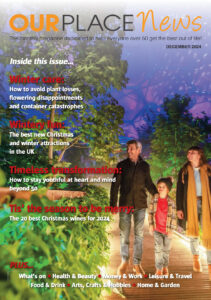New study suggests that short, regular, doses of awe – in the form of nature, music or art significant increases positive emotions.

Inews reports that a regular dose of awe works wonders for people’s mental health, making them smile more and shift focus from their problems to the outside world, a new study finds.
Older adults who took weekly 15-minute “awe walks” in inspiring scenery for just eight weeks reported increased positive emotions such as compassion and gratitude and less distress in their daily lives, according to research by Trinity College Dublin and the University of California at San Francisco.
This shift was reflected in “selfies” participants took on their weekly walks, in which an increasing focus on their surroundings rather than themselves was paralleled by measurably broader smiles by the end of the study, the researchers said.
“Negative emotions, particularly loneliness, have well-documented negative effects on the health of older adults, particularly those over age 75,” said Virginia Sturm, of UC San Francisco.
Marked improvement in wellbeing
“What we show here is that a very simple intervention – essentially a reminder to occasionally shift our energy and attention outward
instead of inward – can lead to significant improvements in emotional well-being,” she said.
Meanwhile, researchers suggest that other activities that inspire awe may also have a similar positive benefit.
Dacher Keltner, of UC Berkeley, said: “Awe is a positive emotion triggered by awareness of something vastly larger than the self and not immediately understandable – such as nature, art, music, or being caught up in a collective act such as a ceremony, concert or political march.”
“Experiencing awe can contribute to a host of benefits including an expanded sense of time and enhanced feelings of generosity, wellbeing, and humility,” he said.
The study (The study is published in the journal Emotion.)
Participants in the study filled out brief surveys after each walk, reflecting their growing sense of wonder and appreciation for the
details of the world around them.
For example, one participant reflected on “the beautiful fall colours and the absence of them amidst the evergreen forest… how the leaves were no longer crunchy underfoot because of the rain and how the walk was more spongy now… the wonder that a small child feels as they explore their expanding world.”
In contrast, participants from the control group tended to be more inwardly focused. For example: “I thought about our vacation in Hawaii coming up this next Thursday. Thought about all the things I had to do before we leave.”
(Story source: Inews)

